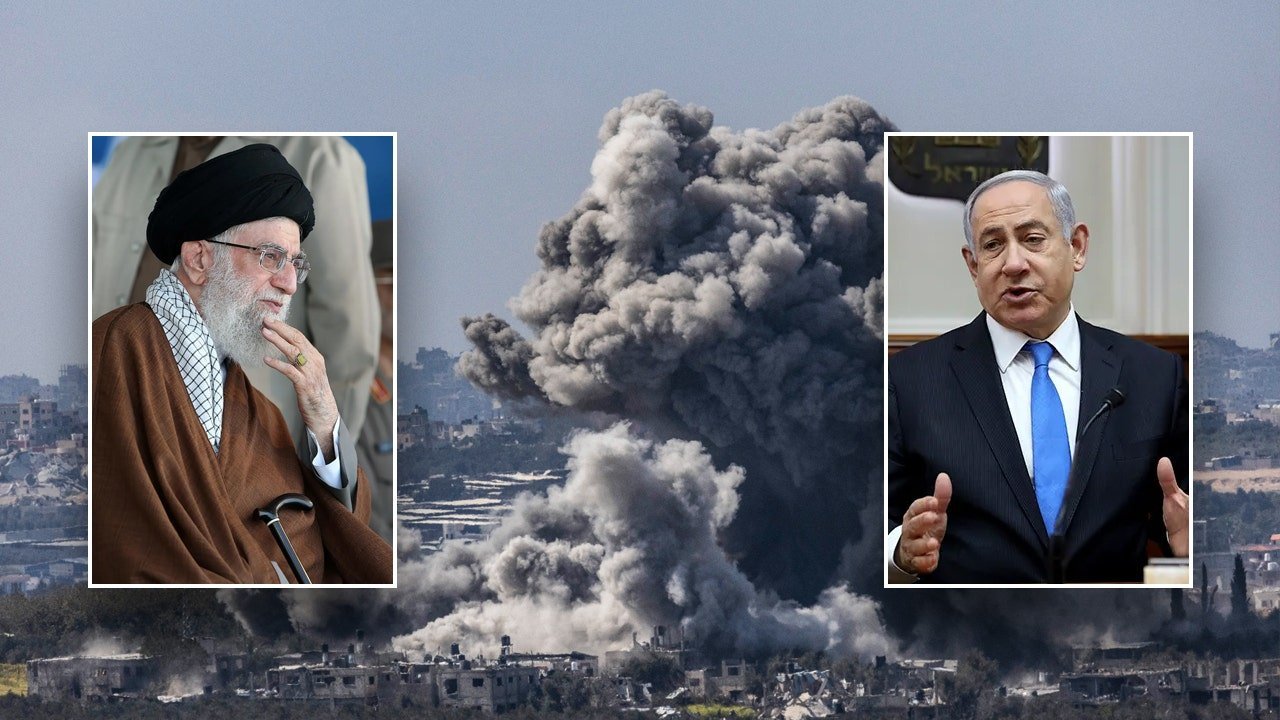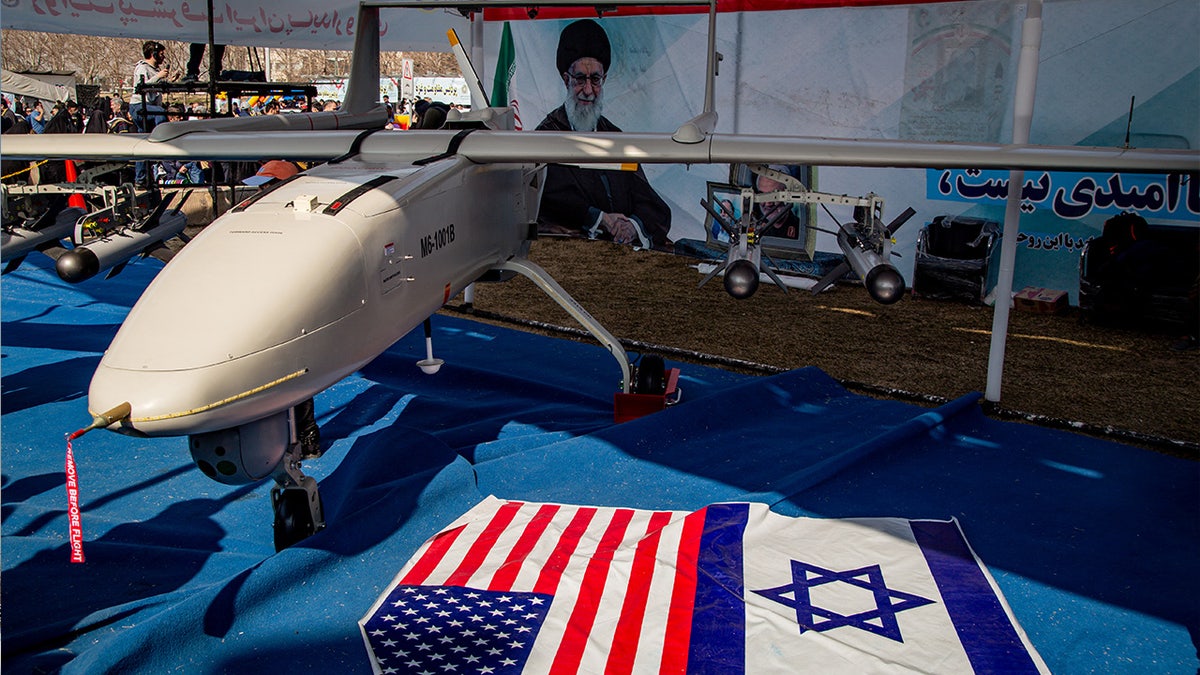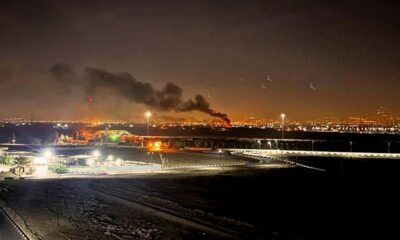INTERNACIONAL
How can Israel respond to Iran’s brazen attack?

After Iran’s attack on Israel was largely thwarted by the country’s defenses and key allies, attention has turned to how Israeli Prime Minister Benjamin Netanyahu could choose to respond.
«The fact that the Iranian attack was a total failure does not detract even an ounce from Israel’s obligation to retaliate against Iran for its direct act of aggression,» Jonathan Conricus, a former spokesman for the IDF and senior fellow at Foundation for Defense of Democracies (FDD) focused on the Middle East, told Fox News Digital.
The comments come after Iran launched over 300 missiles and drones from its own territory at Israel on Saturday, an attack that Israel claims was largely beaten back by its sophisticated defenses and the help of allies in the region.
But the brazen Iranian attempt has opened up questions about how Israel may choose to respond, even amid reports that the Biden administration has urged Netanyahu to show restraint in a bid to prevent an escalating conflict in the Middle East.
BIDEN CALLING FOR G7 MEETING IN RESPONSE TO IRAN’S ‘BRAZEN’ ATTACK

Israeli Prime Minister Benjamin Netanyahu meets with Israeli Defense Force soldiers on the front lines ahead of expected ground invasions. (Benjamin Netanyahu – בנימין נתניהו @netanyahu)
«It’s hard to conceive of a world in which Israel responds to Iran’s crossing of redlines by merely absorbing Tehran’s missile and drone strikes. It’s even harder to think of such a world in a post-October 7 Middle East,» Behnam Ben Taleblu, a senior fellow at FDD focused on Iranian security, told Fox News Digital. «Despite two decades of alarm ringing over the Iranian nuclear program, Israel has thus far not overtly attacked Tehran’s nuclear program. One wonders the degree to which this may change as Israel prepares its response.»
According to a report from the Jerusalem Post, such an attack on Iran’s nuclear capabilities has been the subject of years of planning, with the potential for a response to feature F-35 stealth fighter jets that would hit sites across Iran as far away as 1,200 miles from Israel.

Israeli defense systems intercept an Iranian missile over Maale Adumim, near Jerusalem, in the early hours of April 14, 2024. Credit Matanya Reichman/TPS
The aim of such an attack would be to eliminate Iran’s air defenses, the report notes, paving the way for the Israeli military to strike at nuclear facilities hand-picked by the country’s intelligence.
But Israel would likely need to make sure its plans garnered U.S. support, Conricus argued, adding that military strikes would not be the only option on the table.
IRAN OFFERS ISRAEL OFF-RAMP TO ‘CONCLUDE’ ATTACK AFTER LAUNCHING MISSILES, DRONES ON JEWISH STATE

Dozens of Israeli Air Force planes were deployed overnight. The jets intercepted UAVs and cruise missiles sent from Iran. Photo: IDF Spokesman’s Unit. (IDF Spokesman’s Unit)
«Israel has various long range capabilities to choose from, but what Israel has to ensure is U.S. support or at least approval, and to clarify the strategic objectives that it’s aiming for,» Conricus said. «Israel could retaliate against the Iranian military nuclear program or against its economic infrastructure, ports and refineries, depending on which strategic objective it wants to achieve.»
Overnight, Israeli forces pummeled Hezbollah targets in Lebanon in a barrage of airstrikes Sunday. Those attacks targeted a Hezbollah weapons manufacturing facility and other targets, the IDF said.

Missiles and UAVs are shown with Israeli and American flags on the ground for the people on the side of the road in Tehran, Iran, on February 11, 2024. (Photo by Hossein Beris / Middle East Images / Middle East Images via AFP) (Photo by HOSSEIN BERIS/Middle East Images/AFP via Getty Images) (Photo by HOSSEIN BERIS/Middle East Images/AFP via Getty Images)
«A short while ago, IDF fighter jets struck a number of military structures in a complex belonging to Hezbollah’s Radwan Forces in the area of Jbaa in southern Lebanon,» Israeli forces said in a statement. «Earlier during the night, IDF fighter jets struck Hezbollah military structures in the areas of Khiam and Kfarkela.»
According to the Jerusalem Post report, the wave of Israeli F-35s into Iran would likely be followed by separate waves of F-15 eagles, F-16 fighting falcons, and more heavily loaded F-35s carrying loads that could potentially penetrate deep into the ground to destroy Iranian nuclear facilities.
IRAN CLAIMS TO FOLLOW DRONE LAUNCH AT ISRAEL WITH BALLISTIC MISSILE BARRAGE
Israel could also use its own stockpile of surface-to-surface ballistic missiles and attack drones, the report notes.
While such an attack has been gamed out, Taleblu argued it is unclear whether Israel would opt for such a dramatic response.

Israeli Prime Minister Benjamin Netanyahu convenes the War Cabinet, at the Kirya in Tel Aviv following the launch of drones from Iran and aimed at Israel. (Prime Minister of Israel @IsraeliPM on X)
«Despite two decades of alarm ringing over the Iranian nuclear program, Israel has thus far not overtly attacked Tehran’s nuclear program,» Taleblu said. «One wonders the degree to which this may change as Israel prepares its response.»
Speaking with CNN Sunday, retired Gen. David Petraeus noted that Israel will have plenty of options if it chooses to launch a response, including both overt and covert military actions.
CLICK HERE TO GET THE FOX NEWS APP
«They can pursue asymmetric attacks, cyberspace and so forth,» Petraeus said. «And keep in mind that, of course, Washington is meeting with the other G7 countries to determine what kind of diplomatic and economic responses should follow in a coordinated effort as well.»
But whatever Israel decides, Taleblu said any plan will have to to come to a «theory of the case for victory.»
«Would it be going for a decapitation strike against regime leadership, a defanging strike against the regime’s long-range strike assets, or military bases, or a punishment strike that could perhaps target the energy and oil sectors, which is the financial lifeblood of the Islamic Republic,» Taleblu said.
INTERNACIONAL
Gran Bretaña: murió el ex ministro de Defensa de Margaret Thatcher durante la guerra de Malvinas

Rechazaron su renuncia
Miloska, su amor yugoslavo
-
POLITICA3 días ago
Ricardo Jaime se entregó en Comodoro Py: cumplirá su condena por la tragedia de Once en prisión
-
POLITICA2 días ago
Javier Milei y el gabinete felicitaron a Donald Trump: “Puede contar con Argentina para llevar a cabo su tarea”
-
POLITICA1 día ago
El Gobierno advirtió que cerrará Aerolíneas Argentinas si los gremios no frenan las medidas de fuerza
-
INTERNACIONAL2 días ago
¿A qué hora se conocerán los resultados oficiales de las elecciones en Estados Unidos 2024?
-
ECONOMIA3 días ago
Elecciones EE.UU.: El ‘arma de doble filo’ que puede alargarse en el tiempo Por Investing.com
-
ECONOMIA3 días ago
Meta mantiene la prohibición de nuevos anuncios políticos tras las elecciones Por Investing.com











































